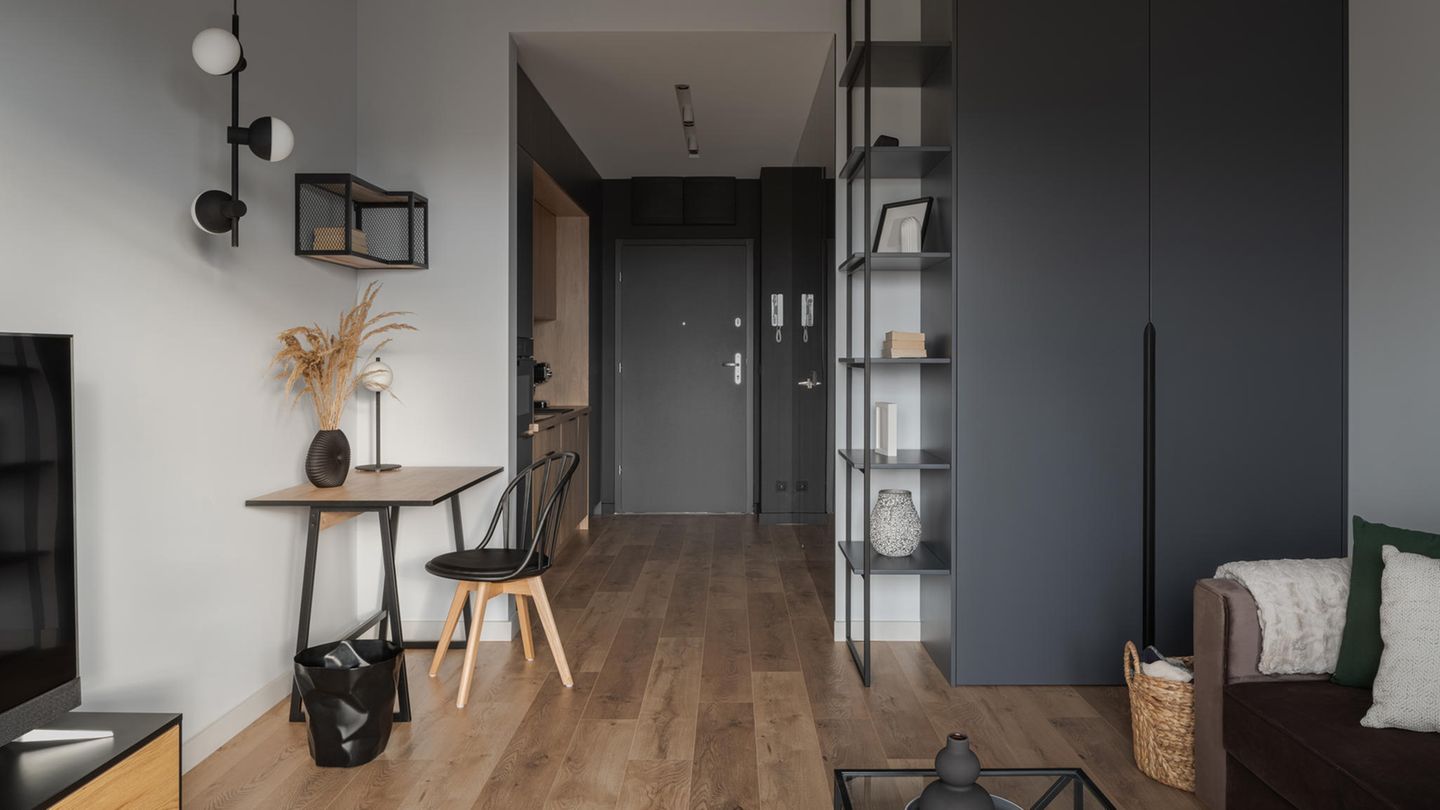More and more furnished mini-apartments are being rented out across Germany. They are lucrative for investors because they can be rented out at high prices – and the model is working.

This is original content from the Capital brand. This article will be available for ten days on stern.de. After that, you will find it exclusively on capital.de. Capital, like the star to RTL Germany.
Living in the smallest of spaces – a micro-apartment offers everything you need, compact and practical. But that also comes at a price, because the rent for a relatively small living space is often high. For example, if you want to rent a single apartment in Cologne, you have to expect costs starting at around 630 euros for little space. Nevertheless, demand for this type of living is increasing, as a report by the real estate service provider Cushman and Wakefield shows. According to the report, students, young professionals and commuters between the ages of 18 and 39 in particular live in the small digs, especially in large cities with many employers and universities.
For these people, this form of living is practical because micro-apartments are usually fully equipped apartments in a central location. Often with less than 30 square meters of living space each, they are usually located in larger complexes with more than 100 units. Only a few residents stay there for long: the small apartments usually serve as a temporary home for a few months or a few years.
Affordable housing remains scarce
The general trend is also towards smaller households: According to the Federal Statistical Office, the number of single-person households is expected to rise from 17.3 million in 2023 to 19.3 million in 2040, which will account for almost 45 percent of all households. While an average of 1.91 people lived in a household in 2020, this number is expected to fall to 1.85 by 2035, figures from the Federal Statistical Office also show.
Airstream
House on wheels: A family lives their dream of freedom
In order to meet demand, one- and two-room apartments have been increasingly built in large cities in recent years. Although there is also a shortage of larger living space in many places, for example for families. In Berlin, Frankfurt and Düsseldorf in particular, where population growth is strong, more and more micro-apartments are being built. But the new supply does not improve the situation on the tight housing market.
According to the Central Real Estate Committee (ZIA), there will be a shortage of around 750,000 apartments by 2025, and by 2027 there could be a shortage of up to 830,000 apartments. That would correspond to the entire housing stock in Bremen and Saarland combined. The housing shortage is particularly severe in the big cities. This is mainly because too few apartments are being built where they are needed. The figures confirm this. In Cologne, the need for new apartments was only covered by 37 percent in the last three years, while Berlin had a rate of 52 percent.
However, students in particular are urgently looking for affordable housing. The existing dormitory spaces are only sufficient for around 9.6 percent of students, as the German Student Union reports. The housing market cannot keep up with the increase in student numbers, so many are turning to micro-apartments – even if these are more expensive – at least until they have found something affordable. Those who invest in micro-apartments can benefit from this. But the furnished apartments do not solve the housing problem, neither for students nor for people with higher incomes and families.
Increased price premiums for furnished mini-apartments
In contrast to the traditional housing market, micro-apartments often do not have “cold rents” with separately billed operating costs. Instead, the landlords of such apartments offer so-called all-in contracts, in which rent, additional costs, furnishings and services are included in the rental price. Since the apartments are furnished and the rental contracts are for a limited period, they are not subject to the rent cap. This type of housing promises investors a slight increase in returns compared to traditional housing, with a manageable capital investment.

Luxury property: This is where Heidi Klum, Claudia Schiffer and Co. live
01:43 min
At the same time, micro-apartments are becoming a major problem for those looking for a new home on the real estate market. “Furnished apartments are rented out at significant price premiums, especially in tight housing markets,” says Christian Oberst, senior economist for housing policy and real estate economics at the German Economic Institute (IW), on the “Tagesschau”.
In order to improve tenant protection for furnished apartments, the Federal Council prepared a draft law last year. The federal states want to expand the rent cap and strengthen protection for short-term rentals. At the request of Bremen and Hamburg, the Chamber of States has decided to submit the draft to the Bundestag to determine how much landlords can charge for furniture. A decision by the Bundestag is still pending. However, many micro-apartments are exempt from the rent cap anyway because they are located in new buildings or modernized buildings, but the law only applies to existing properties.
Source: Stern




